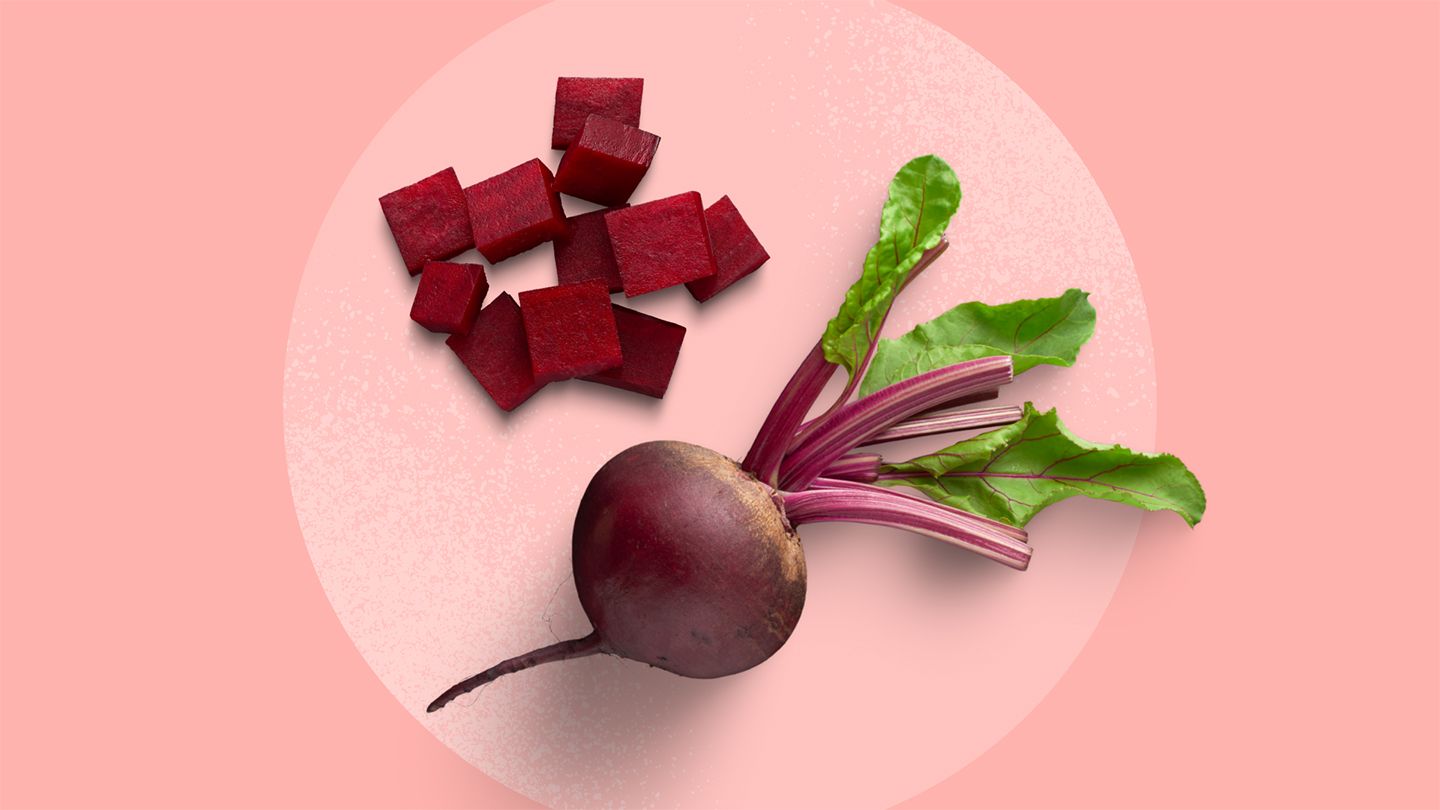Beets can be a divisive vegetable — people tend to love or hate them — but they don’t often cause stomach cramps. Rather, pain after eating beets may be due to a food intolerance, allergy, or an overabundance of fiber. Beets may also be trouble for people sensitive to fructans, a carbohydrate.
Beets and Your Belly
“Beets are an incredibly healthy food, especially for people who exercise,” says Will Bulsiewicz, MD, a gastroenterologist and author of Fiber Fueled. “But they are extremely dense and high in fiber, which all at once can be excessive for some people.”
According to the American Academy of Nutrition and Dietetics, women should aim to get about 25 to 28 grams (g) of fiber per day, while men need 28 to 34 g per day. However, adding too much fiber too quickly to your diet can lead to uncomfortable symptoms like bloating, cramping, and gas, according to Mayo Clinic. It’s best to add fiber to your meals gradually over a few weeks. One cup of raw beets contains nearly 4 g of fiber, or about 15 percent of the recommended daily value, according to the U.S. Department of Agriculture (USDA).
Raw beets are also a high-FODMAP food, being high in fructans, which can cause digestive distress, Dr. Bulsiewicz says. Although foods high in FODMAPs — fermentable oligosaccharides, disaccharides, monosaccharides, and polyols — are generally thought of as a concern for people with irritable bowel syndrome (IBS), most people have some threshold.
“People with IBS will be much more vulnerable to these issues if they exceed what their body is capable of dealing with,” Bulsiewicz says. “But any of us can have problems if we consume fiber and FODMAPs to excess,” noting that pickled beets are lower in fructans than raw beets. “Pickling them does make beets a bit gentler on the gut,” he says. Cooked beets are also lower in fructans than raw beets.
Breaking Down Beets
According to the USDA, 1 cup of raw beets has about 58 calories and contains moderate amounts of common minerals like iron, potassium, and magnesium, and about 4 g of fiber. Cooked beets are about the same in terms of fiber, slightly higher in vitamins and minerals, and have about 75 calories per cup, according to the USDA.
In addition to being high in fiber, beets are rich in phytonutrients, plant-based compounds that have been associated with enhanced immunity, healthy estrogen metabolism, the killing off of cancer cells, and enhanced brain and cardiovascular health, according to the American Society for Nutrition.
“Beets contain nitrates that convert in the body to increase nitric oxide, which relaxes blood vessels and lowers blood pressure, allowing increased blood flow to tissues,” Bulsiewicz says. “That’s why they’re so good for exercise.”
Could I Have an Allergy or Intolerance?
Although beets are not among the most common food allergens listed by the American Academy of Allergy, Asthma and Immunology, like fish and shellfish, tree nuts and peanuts, soy, dairy, and wheat, they could certainly be a problem for someone who does have an intolerance or an allergy to them. How can you tell the difference?
“A food intolerance has more to do with your body being challenged to process and digest a food,” Bulsiewicz says. ”The symptoms would be some type of digestive distress like gas, bloating, and maybe diarrhea or constipation.”
An allergy is an overreaction of the immune system to a substance. “Classically, we’d see a more severe reaction like hives on the skin, swelling of the lips, or even difficulty breathing,” Bulsiewicz says.
If stomach cramps persist and are accompanied by shortness of breath, anemia, unintentional weight loss, worsening digestive symptoms, or blood in the stool, you should see a doctor.
“Ironically, the pigment in beets that gives them their intense crimson color passes through our digestive system, resulting in a bowel movement that can appear to have fresh blood in it,” Bulsiewicz says. But this effect is limited — once the beets are gone, the redness should be, too. “If it persists,” he says, “that’s a different issue.”
Read the full article here




